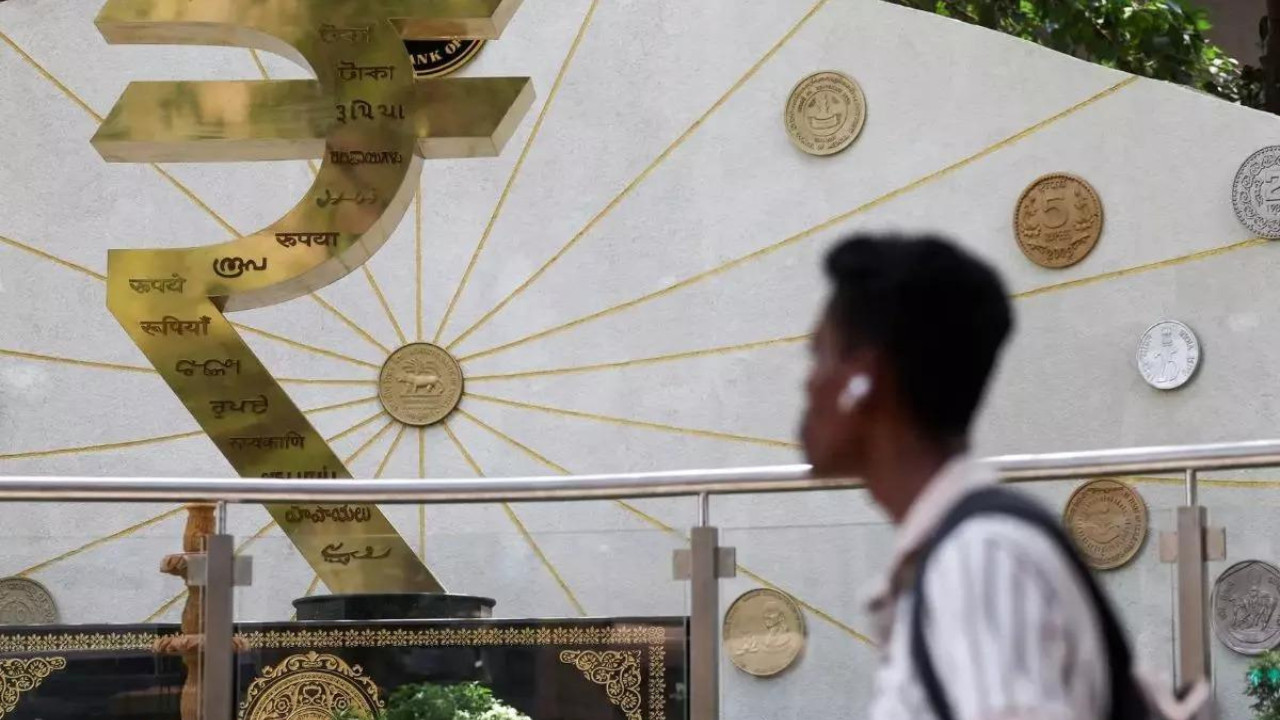The Indian rupee weakened to 86.34 against the US dollar due to rising crude oil prices and geopolitical tensions in the Middle East. A stronger dollar and subdued domestic equities further pressured the rupee. Despite bearish cues, foreign institutional investors were net buyers, purchasing equities worth Rs 1,482.77 crore.
Rough Seas Ahead? The Rupee, Oil, and That Geopolitical Storm Brewing
Okay, let’s talk rupees, dollars, and a world that feels like it’s constantly teetering on the edge. You know how sometimes you wake up and just know it’s going to be one of those days? Well, it feels like the Indian rupee had that kind of morning.
Yesterday saw the rupee take a bit of a tumble, shedding 30 paise to land at 86.34 against the US dollar. Now, on its own, that might not sound like a dramatic earthquake. But in the world of currency, it’s more like a tremor hinting at potentially bigger shifts. So, what’s causing this wobble?
The first, and arguably biggest culprit, is the ol’ black gold – oil. We all feel it at the pump, right? And when global oil prices start spiking, it has a domino effect, especially for a country like India that relies heavily on imports. Think of it this way: we’re essentially paying more dollars for the same amount of oil, which puts downward pressure on the rupee. The article specifically mentions this “oil spike” as a key driver, and it’s a point worth emphasizing. We’re talking about the lifeblood of economies here, and any disruption is going to ripple outwards.
Now, why is oil spiking? That brings us to the second part of the equation: the “geopolitical crisis” mentioned in the original report. Let’s be honest, the world stage feels like a particularly turbulent drama right now. Unrest in key oil-producing regions, political tensions flaring up… it all adds fuel to the fire, literally and figuratively. The uncertainty creates fear in the market, and fear tends to drive prices upwards. It’s a classic supply-and-demand issue, amplified by anxieties about stability.
And it’s not just oil and geopolitics playing their parts. The article also touches on “weak equities.” That essentially means the stock market wasn’t exactly painting a rosy picture either. When the stock market falters, it can signal a lack of investor confidence in the overall economy. This can lead to foreign investors pulling out their money, further weakening the rupee as they convert those rupees back into stronger currencies like the dollar.
Think of it like this: imagine you’re building a house. If the foundation (the economy) starts to look shaky, you might hesitate to invest more time and money into it. International investors feel the same way about national economies.
So, what does this all mean for you and me, the average person navigating our daily lives? Well, a weaker rupee can translate into a few things. Firstly, imported goods become more expensive. That fancy gadget you’ve been eyeing? Its price tag just got a little heavier. The same goes for raw materials used in Indian manufacturing, which can then drive up the cost of locally produced goods.
Secondly, travelling abroad becomes more expensive. Your dream vacation to Europe? That’s going to cost a bit more in rupee terms.
Of course, there’s always a flip side. A weaker rupee can actually benefit Indian exporters, as their goods become more competitive in the global market. This can boost certain sectors of the economy and potentially create more jobs. However, the overall impact tends to be more complex and nuanced than a simple “win” for exporters.
Now, the burning question is: where do we go from here? Will the rupee continue its slide? Will oil prices keep climbing? The truth is, predicting the future is a mug’s game. There are so many variables at play, from global political developments to domestic economic policies.
However, keeping a close eye on those key indicators – oil prices, geopolitical events, and the performance of the Indian stock market – will give us a good sense of the direction the wind is blowing. And, perhaps more importantly, it will help us understand the interconnectedness of the global economy and how events on the other side of the world can impact our wallets right here at home.
It’s a reminder that we live in an increasingly interconnected world, where a crisis halfway across the globe can have real and tangible consequences for us all. So, stay informed, stay aware, and maybe start saving a little extra for that dream vacation… just in case. The world of finance can be a bumpy ride, but knowledge is power, and understanding the forces at play is the best way to navigate the rough seas ahead.







